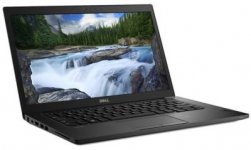
Refurbished IT Equipment in real terms!

“Isn’t it used stuff, why would I buy something that doesn’t work anymore?”
A common misconception is that ‘refurbished’ IT hardware is somehow inferior to ‘newly manufactured’ IT Hardware.
The reality is that refurbished IT equipment, although used, is tested, and verified to function properly, and be free of defects before it is sold. The hardware warranty of the refurbed product works the same way of newly manufactured product.
“Okay, so it works and is under warranty, but why change from new to refurbished?”
The global economy has operated on what is referred to as a linear economic model. Manufacturer’s design and produce product with a limited lifespan. This is particularly prevalent in the IT industry.
Technology product refresh rates have increased from a three-year cycle to new product releases every twelve to eighteen months. Hardware has a ‘beginning, and an end’. Vendors offer product warranty based on the ‘life cycle’ of a machine. That means that after three years, or at most five, the product is considered ‘redundant’ and then discarded.
“I don’t understand why this is an issue?”
Manufacturing computer hardware requires natural resources in vast quantities. Water, steel, glass, silica sand, iron ore, gold, bauxite, fossil fuel, carbon dioxide which are finite and cannot be reproduced. Additionally, extreme chemical processes using lead, arsenic, mercury, cadmium, selenium, chromium, and flame retardants are used to create the materials to build computers and are extremely hazardous.
A single computer emits an approximated 227 to 270 kilograms of carbon dioxide. On average a user operates a laptop for eight hours a day, which equates to 150-to-300-watt usage. This means that as much as 44 to 88 kilograms of carbon dioxide is emitted into the environment over a twelve-month time span.

E-waste (discarded electronic equipment) is on average 20 to 50 million metric tons per year. Only 12.5% of e-waste is recyclable and requires specific controls to ensure safety during the process.
Awareness of the impact the make-use-discard culture has had environmentally, has altered the way the IT industry is evolving, as is an evolution toward a global circular economic model. Manufacturers are creating product that is regenerative and restorative by design, without sacrificing quality or performance, at concept stage.
In 2015, Google, one of the largest corporations in the world, announced that they would move from their current economic model, toward a sustainable business model. 22% of the components Google used for machine upgrades in 2016, were refurbished inventory.
“So, if Google have done this, why doesn’t everyone?”
Mostly because there is a definite lack of awareness of what refurb is, and the benefits of deploying refurbished equipment.
Reduced carbon footprint and environmental impact considerations aside, reduced cost is what is of predominant interest to the IT manager. On average, only 25% of the total annual budget is allocated to IT spend. Do more with less!
Refurbished solutions are supplied, at 50% to 60% less than the original cost of the product at time of manufacture. Premium generation hardware is available to meet every level of user requirements, without sacrificing technical specifications, or product reliability.
“That’s fantastic, you can save me money, but right now I need you to supply quickly?”
When the Corona virus was declared a pandemic in early March 2020, it not only affected each one of us personally, but it also completely reshaped the global economic landscape.
Governments locked down their countries, imposing mandatory rules that negatively impacted all business, albeit small, medium or enterprise. Any service or supply chain that did not fall into a “critical” sector was forced to reduce or halt operations.
The IT sector, and particularly the hardware manufacturing, vendor assembly lines, logistics and IT hardware sales industries were all but brought to a standstill. Keeping people safe was paramount.
However, with the demand for product outweighing the ability to supply, it meant disruption to users. Workforces, schools, and university users, needed to be set up to work remotely to remain safe and productive, in the quickest amount of time.
Refurbished IT equipment is not manufactured, so stock is available in real time. Stock is factory reconditioned, tested and verified, to ensure reliability, quality and performance.
Our seamless online purchasing portal provides order delivery to your door within 3 – 5 working days. (Location dependent). https://www.ppsafrica.co.za
“Refurbished really should become a part of our IT Strategy.”
We have highlighted only a few of the benefits of refurbished technology. The real question to ask now, “Are you ready to be a part of the future?”
Sources:
www.google.com
www.weforum.org
www.golegal.co.za
www.epa.gov
www.conserve-energy-future.com







